[English] 日本語
 Yorodumi
Yorodumi- PDB-5vf0: Solution NMR structure of human RAD18 (198-240) in complex with u... -
+ Open data
Open data
- Basic information
Basic information
| Entry | Database: PDB / ID: 5vf0 | |||||||||
|---|---|---|---|---|---|---|---|---|---|---|
| Title | Solution NMR structure of human RAD18 (198-240) in complex with ubiquitin | |||||||||
 Components Components |
| |||||||||
 Keywords Keywords | TRANSFERASE / Ubiquitin ligase / Ubiquitin / Nucleosome / DNA damage response | |||||||||
| Function / homology |  Function and homology information Function and homology informationRad6-Rad18 complex / positive regulation of chromosome segregation / Y-form DNA binding / nuclear inclusion body / postreplication repair / symbiont entry into host cell via disruption of host cell glycocalyx / symbiont entry into host cell via disruption of host cell envelope / virus tail / polyubiquitin modification-dependent protein binding / protein monoubiquitination ...Rad6-Rad18 complex / positive regulation of chromosome segregation / Y-form DNA binding / nuclear inclusion body / postreplication repair / symbiont entry into host cell via disruption of host cell glycocalyx / symbiont entry into host cell via disruption of host cell envelope / virus tail / polyubiquitin modification-dependent protein binding / protein monoubiquitination / protein autoubiquitination / replication fork / Recognition of DNA damage by PCNA-containing replication complex / RING-type E3 ubiquitin transferase / ubiquitin protein ligase activity / E3 ubiquitin ligases ubiquitinate target proteins / site of double-strand break / single-stranded DNA binding / damaged DNA binding / nuclear body / DNA repair / ubiquitin protein ligase binding / centrosome / DNA damage response / protein-containing complex binding / zinc ion binding / nucleoplasm / identical protein binding / nucleus / cytoplasm Similarity search - Function | |||||||||
| Biological species |  Homo sapiens (human) Homo sapiens (human) | |||||||||
| Method | SOLUTION NMR / simulated annealing | |||||||||
 Authors Authors | Hu, Q. / Botuyan, M.V. / Mer, G. | |||||||||
| Funding support |  United States, 2items United States, 2items
| |||||||||
 Citation Citation |  Journal: Mol. Cell / Year: 2017 Journal: Mol. Cell / Year: 2017Title: Mechanisms of Ubiquitin-Nucleosome Recognition and Regulation of 53BP1 Chromatin Recruitment by RNF168/169 and RAD18. Authors: Hu, Q. / Botuyan, M.V. / Cui, G. / Zhao, D. / Mer, G. | |||||||||
| History |
|
- Structure visualization
Structure visualization
| Structure viewer | Molecule:  Molmil Molmil Jmol/JSmol Jmol/JSmol |
|---|
- Downloads & links
Downloads & links
- Download
Download
| PDBx/mmCIF format |  5vf0.cif.gz 5vf0.cif.gz | 748.7 KB | Display |  PDBx/mmCIF format PDBx/mmCIF format |
|---|---|---|---|---|
| PDB format |  pdb5vf0.ent.gz pdb5vf0.ent.gz | 625.8 KB | Display |  PDB format PDB format |
| PDBx/mmJSON format |  5vf0.json.gz 5vf0.json.gz | Tree view |  PDBx/mmJSON format PDBx/mmJSON format | |
| Others |  Other downloads Other downloads |
-Validation report
| Summary document |  5vf0_validation.pdf.gz 5vf0_validation.pdf.gz | 547 KB | Display |  wwPDB validaton report wwPDB validaton report |
|---|---|---|---|---|
| Full document |  5vf0_full_validation.pdf.gz 5vf0_full_validation.pdf.gz | 766.5 KB | Display | |
| Data in XML |  5vf0_validation.xml.gz 5vf0_validation.xml.gz | 41.8 KB | Display | |
| Data in CIF |  5vf0_validation.cif.gz 5vf0_validation.cif.gz | 68.2 KB | Display | |
| Arichive directory |  https://data.pdbj.org/pub/pdb/validation_reports/vf/5vf0 https://data.pdbj.org/pub/pdb/validation_reports/vf/5vf0 ftp://data.pdbj.org/pub/pdb/validation_reports/vf/5vf0 ftp://data.pdbj.org/pub/pdb/validation_reports/vf/5vf0 | HTTPS FTP |
-Related structure data
| Related structure data |  5veyC C: citing same article ( |
|---|---|
| Similar structure data | |
| Other databases |
|
- Links
Links
- Assembly
Assembly
| Deposited unit | 
| |||||||||
|---|---|---|---|---|---|---|---|---|---|---|
| 1 |
| |||||||||
| NMR ensembles |
|
- Components
Components
| #1: Protein | Mass: 8576.831 Da / Num. of mol.: 1 Source method: isolated from a genetically manipulated source Source: (gene. exp.)  Homo sapiens (human) / Gene: UBB / Production host: Homo sapiens (human) / Gene: UBB / Production host:  |
|---|---|
| #2: Protein/peptide | Mass: 5225.018 Da / Num. of mol.: 1 Source method: isolated from a genetically manipulated source Source: (gene. exp.)  Homo sapiens (human) / Gene: RAD18, RNF73 / Plasmid: pTEV / Production host: Homo sapiens (human) / Gene: RAD18, RNF73 / Plasmid: pTEV / Production host:  References: UniProt: Q9NS91, RING-type E3 ubiquitin transferase |
| #3: Chemical | ChemComp-ZN / |
-Experimental details
-Experiment
| Experiment | Method: SOLUTION NMR | ||||||||||||||||||||||||||||||||||||||||||||||||||||||||||||||||||||||||||||||||||||||||||||||||||||||||||||||||||||||||||||||||||||||||||||||||||||||||||||||||||||||||||||||||||||
|---|---|---|---|---|---|---|---|---|---|---|---|---|---|---|---|---|---|---|---|---|---|---|---|---|---|---|---|---|---|---|---|---|---|---|---|---|---|---|---|---|---|---|---|---|---|---|---|---|---|---|---|---|---|---|---|---|---|---|---|---|---|---|---|---|---|---|---|---|---|---|---|---|---|---|---|---|---|---|---|---|---|---|---|---|---|---|---|---|---|---|---|---|---|---|---|---|---|---|---|---|---|---|---|---|---|---|---|---|---|---|---|---|---|---|---|---|---|---|---|---|---|---|---|---|---|---|---|---|---|---|---|---|---|---|---|---|---|---|---|---|---|---|---|---|---|---|---|---|---|---|---|---|---|---|---|---|---|---|---|---|---|---|---|---|---|---|---|---|---|---|---|---|---|---|---|---|---|---|---|---|---|
| NMR experiment |
|
- Sample preparation
Sample preparation
| Details |
| |||||||||||||||||||||||||||||||||||||||||||||||||||||||||||||||||||||||||||||||||
|---|---|---|---|---|---|---|---|---|---|---|---|---|---|---|---|---|---|---|---|---|---|---|---|---|---|---|---|---|---|---|---|---|---|---|---|---|---|---|---|---|---|---|---|---|---|---|---|---|---|---|---|---|---|---|---|---|---|---|---|---|---|---|---|---|---|---|---|---|---|---|---|---|---|---|---|---|---|---|---|---|---|---|
| Sample |
|
 Movie
Movie Controller
Controller


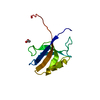
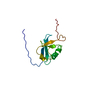
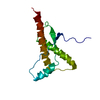

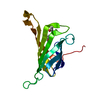



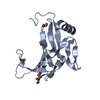

 PDBj
PDBj









 HSQC
HSQC